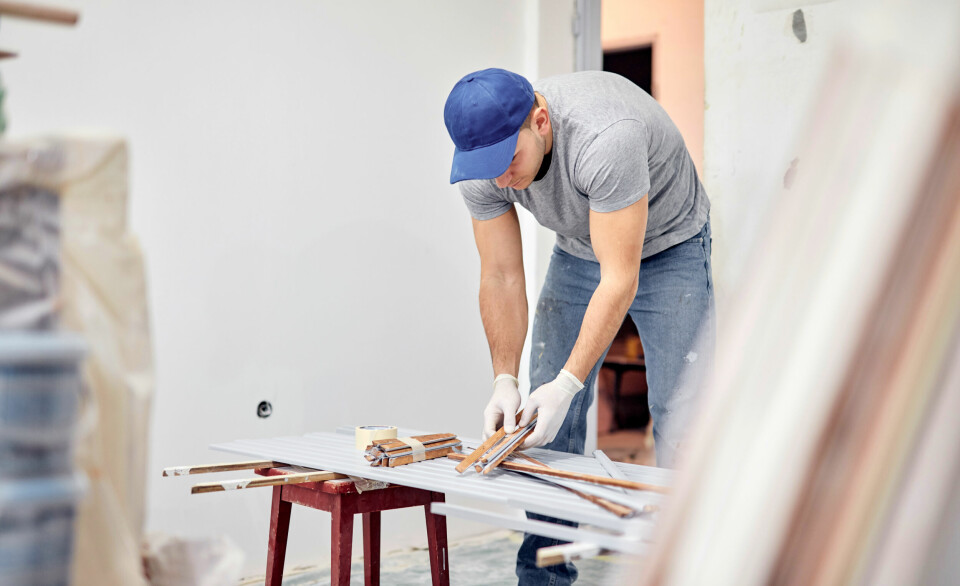There is one element in particular that strikes French people when they step inside the church of Saint Bartholomew's, Dinard.
While the majestic organ, four metres above the altar with its pipes spread like an eagle in flight may dominate the interior, a humbler assortment of church furnishings make this place of worship really stand out – the kneelers.
Carefully embroidered by worshippers themselves, they have no place in a French Catholic church – but then St Bartholomew’s is neither French nor Catholic.
“This is a very British church. You are in England,” said Claude François, former president of the Friends of Saint-Bartholomew.
Migration in Dinard
Located in Dinard (Ille-et-Vilaine), it is the only Anglican church in western France, and its construction and continuing services tell a bigger centuries-old migration story between France and England.
The need to build Saint Bartholomew's was provoked by the increasing presence of Britons along the Channel coast, from Brest to Dieppe.
But it was a strip of land in the Cotes-d’Armor that most congregated, first involuntarily – imprisoned in Dinan castle during the Napoleonic wars – but later as holidaymakers, when the late 19th century saw the town flourish as a fashionable summer resort for English aristocrats.
Dinard, a small town north of Dinan, became a similar magnet for them. Within the local expat population was Lyona Faber who, following the death of her husband, built a villa in 1860 overlooking the harbour of Saint-Malo.
She followed this by developing numerous plots and building houses for sale to Anglo-American friends from Dinan and the wider area. With her entrepreneurial encouragement, Dinard grew from a small fishing village to a vibrant Anglo-American seaside resort. When Lyona died in 1866, her son William Stanley Faber gave land for a church in her memory.
Spiritual haven for Britons abroad
According to Alan Charters, author of Anglicans in Brittany, his decision was not supported by the Bishop of London, head of Anglican churches in Europe.
He considered that Dinard did not need another church as Saint-Malo already had eight.
Nevertheless, Faber ploughed ahead with the idea and, with the help of several people to raise funds, Saint Bartholomew's Church was built in 1871 at the corner of rue des Cèdres and rue Faber.
The inaugural service took place on November 16, 1871. Soon after, the church had to be enlarged to accommodate the growing number of British and American expatriates in Dinard. The north transept was built and the framework covering both aisles was rebuilt in 1880.
“The exposed framework, built in the mediaeval English style, contributes to the British character of the building, along with the beautifully crafted wooden furnishings,” the Ministry of Culture wrote in a detailed note about that renovation work.
In 1894, a new organ replaced the church’s tiny harmonium. Alfred Oldknow, a Briton who had built three other organs in nearby churches in Saint-Malo, Dinan and Saint-Brieuc (Côtes-d’Armor), was commissioned to do the work.
Mr Oldknow’s organ was made up of 13 different stops, two keyboards and a pedal in Victorian style. It cost around 10,000 francs, a considerable amount at the time. It has had to be rebuilt only twice in nearly 130 years and is one of the few almost intact examples of Oldknow's work.
Read more: France builds its first traditional Hindu temple
English library in Dinard
Ownership of the St Bartholomew's Church switched from the Faber family to the association de l’Eglise Anglicane de Dinard in 1926, several years before an English-speaking library was built near the church that counts more than 4,000 books today.
By then, Britons were well established in and around the church, latterly joined by Americans.
The US Moulton family built town centre villas named after themselves. The British, meanwhile, were behind La Villa Bric-à-Brac, now the Castelbrac Hotel, and imported tennis, golf and the first yacht club in France.
“This is how the community spread,” said Marc Bonnel, president of the Histoire et patrimoine du pays de Dinard–Rance –Emeraude.
Mr Bonnel is due to release a book in 2025 exploring the impact of Britons and Americans in Dinard.
“The British and Americans have brought in exotic flowers from New Zealand and India, the Clair de Lune, a local boardwalk. The town bears the name of English-speaking personalities, such as the rue Winston Churchill or boulevard Wilson. One commemorative plaque thanks the contribution of American soldiers during World War One,” he added.
Worship among war
During World War Two, a retired American Episcopal priest continued to celebrate services until the US entered the conflict. The church was then used by German Lutheran soldiers, who respected the building and left it undamaged.
When the war ended, the decline of English and American visitors to Dinard forced the parish to operate on a piecemeal basis. There was no longer a resident priest and it fell to the Catholic parish priest to help out.
By the mid-1990s, however, the number of Britons in the area had increased again, and an 11am service is now held every Sunday. There are around 50 regular British worshippers and attendance can reach 100 people in the summer and 300 over the Christmas season.
Personalities who have been to the church include Hugh Grant, Agatha Christie, Winston Churchill and Oscar Wilde.
“The language of the services, the ecumenical atmosphere and the cultural influence from conferences, concerts and events remind us all of the continuing presence of the English in Dinard,” said Mr François.
Find out more at stbartsdinard.fr


































